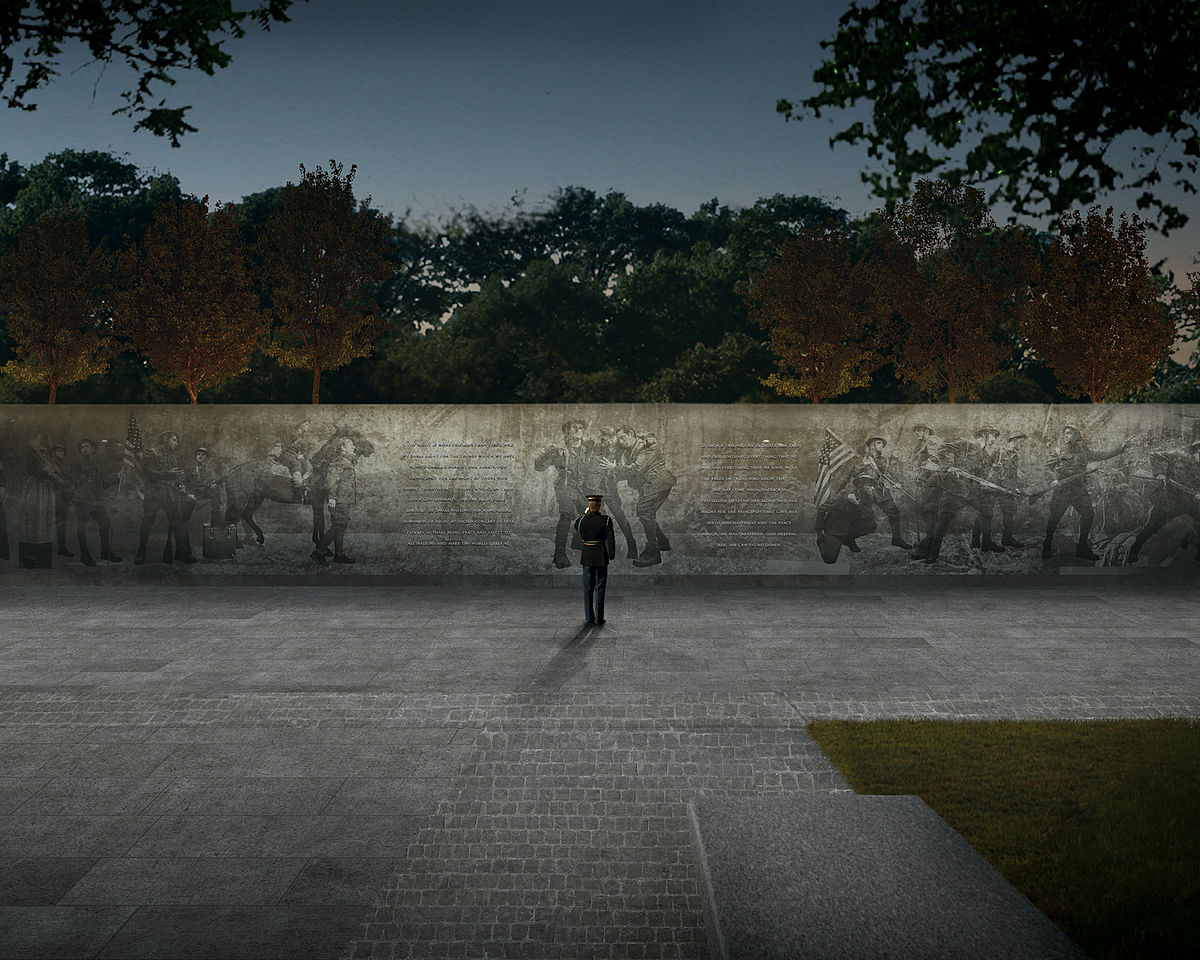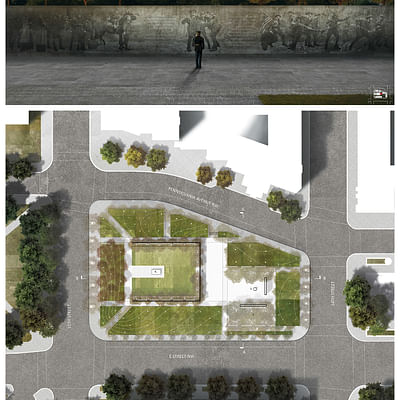25-year-old architect and veteran sculptor win WWI Memorial competition in D.C.
By Bustler Editors|
Tuesday, Jan 26, 2016

Related
As the cityscape of Washington D.C. continues to evolve, another project is in the works at the National World War One Memorial at Pershing Park. Today, the U.S. World War I Centennial Commission announced that 25-year-old architect Joseph Weishaar of Chicago-based Brininstool+Lynch and New York veteran sculptor Sabin Howard won the Centennial Memorial design competition with their proposal, "The Weight of Sacrifice". Not a bad start for Weishaar's professional career, no?
Last summer, the WWICC launched a two-stage design competition to search for the most suitable design for the memorial, which would commemorate the more than 116,000 American men and women who died during the Great War. In addition to that, the winning design would have to be an attractive welcoming urban space.
Stage One reeled in more than 350 entries from around the world. By late August, the jury selected only five to advance to Stage Two. The winning design is still an initial concept and will be finalized in the coming months, with the goal for review from the U.S. National Capital Planning Commission and the Commission of Fine Arts later this year. Further fundraising for the $30-35 million project, which has only raised $1 million so far, will also begin. Completion of the project is slated for November 2018, marking the centennial anniversary of the end of WWI.
Read on for more about the winning proposal.
Project narrative:
"The Weight of Sacrifice: The fall sun settles on a soldier's etched features, enough to alight the small girl patting his horse. Above him 28 trees rise up from the earth, flamed out in brazen red to mark the end of the Great War. He stands on the precipice of the battlefield, surveying the rising tide which has come to call his brothers from their havens of innocence. The figures before him emerge slowly, at first in low relief, and then pull further out of the morass as they cross the center of the wall. They all trudge onward, occasionally looking back at the life that was until they sink back in and down into the trenches.
This is a moment frozen in time, captured in the darkened bronze form which has emerged from the soil to serve as a reminder of our actions. Along the North and South faces we see the emblazoned words of a generation gone by. 137 feet long, these walls gradually slip into the earth drawing their wisdom with them. Around the sculpted faces of the monument the remembrance unfolds. Each cubic foot of the memorial represents an American soldier lost in the war; 116,516 in all. Upon this unified mass spreads a verdant lawn. This is a space for freedom built upon the great weight of sacrifice.
The allegorical idea that public space and public freedom are hard won through the great sacrifices of countless individuals in the pursuit of liberty provides the original design concept for this project. A memorial and a park built to represent this truth should pay homage to the loss incurred in securing these freedoms. The raised figurative walls visually express a narrative of the sacrificial cost of war, while also supporting a literal manifestation of freedoms enjoyed in this country: the open park space above. The urban design intent is to create a new formal link along Pennsylvania Avenue which ties together the memorial to Tecumseh Sherman on the West and Freedom Plaza on the East. This is achieved by lowering the visual barriers surrounding the existing Pershing Park and reinforcing dominant axes that come from the adjacent context."

"The raised form in the center of the site honors the veterans of the first world war by combining figurative sculpture and personal narratives of servicemen and women in a single formal expression. The integration of a park around and atop the memorial alludes to the idea that public space and personal freedom are only available through the sacrifice of our soldiers. Above all, the memorial sculptures and park design stress the glorification of humanity and enduring spirit over the glorification of war.
These themes are expressed through three sources: relief sculpture, quotations of soldiers, and a freestanding sculpture. The figurative relief sculpture, entitled 'The Wall of Remembrance,' is a solemn tribute to the resilience of human bonds against the inexorable tide of war. The 23 figures of the 81' relief transform from civilians into battered soldiers, leading one another into the fray. The central piece, 'Brothers-in-Arms, is the focus of the wall, representing the redemption that comes from war: the close and healing ties soldiers form as they face the horrors of battle together. The wounded soldier is lifted by his brother soldiers toward the future and the promise of healing.
The quotation walls guide visitors around the memorial through the changes in elevation, weaving a poetic narrative of the war as described by generals, politicians, and soldiers. The sculpture on the upper plaza, 'Wheels of Humanity,' recreates the engine of war. These are soldiers tested and bonded by the fires of war to each other and to the machinery they command. For all of the courage and heroic stature they convey, each looks to the other for guidance and a signal to action. The bronze medium used throughout stands for the timeless endeavor we face in the universal pursuit and right of freedom."
Project credits:
Title: The Weight Of Sacrifice
Lead designer(s)/firm: Joe Weishaar & Sabin Howard
Larger team: GWWO Inc., Phoebe Lickwar Landscape Architect, Henry Adams LLC, Keast & Hood, VBH
Scroll down for the project panel boards.




Share
0 Comments
Comment as :